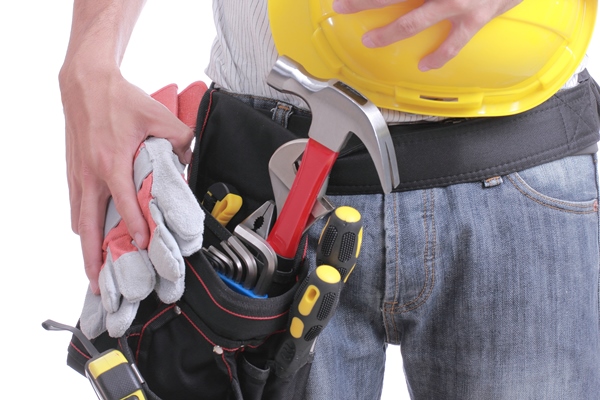Tool Belt Safety

The tool belt is the mark of a tradesman, a hard-working person who knows how to get the job done. Using a tool belt correctly will help ensure your safety while you work.
As an active worker you need to have your tools handy and in order. Carrying your tools on a belt allows you to keep your hands free for your tasks. Tool belts are commonly used in a great variety of occupations including; electricians, carpenters, steelworkers, plumbers and construction workers among many others. Even if you don't use one at work, chances are you use a tool belt for your home maintenance and renovation work.
It is important to secure tools and to guard sharp edges. A falling tool is subject to damage, and can also cause injuries to your feet, or to workers on a level below you. A sharp tool such as a knife or chisel can stab you if it is carried unsafely.
You must choose the right tool belt assembly to keep your implements safe and secure. Pockets, pouches and slots should be of the correct size and shape to keep your tools from falling out. The belt should be made of a sturdy material, reinforced for the points of tools. Fasteners should be effective and resistant to wear.
Sharp tools such as knives, saws, hatchets, axes and other cutting or chopping tools must be guarded by scabbards or sheaths to prevent injury and tool damage.
Tool belts must never be used as safety belts for working at heights.
Do not hang your tool belt up on nails, hooks or other protruding objects where it may cause an entanglement hazard around machinery, or an overhead hazard for people working below you.
A tool belt should be balanced so the weight is approximately equal on each side. You should be able to stand straight, with an imaginary line running from the top of your head, down your spine and to your feet. When the belt is heavier on one side, your back is pulled out of alignment. Repeated wearings cause chronic discomfort and back problems. If you need most of your tools on one side for easy access, balance the other side with supplies such as nails or bolts.
Use broad-strapped suspenders to allow the muscles in your upper back and shoulders to take some of the load.
Take the tool belt off when you take a break, to give your back a chance to rest and readjust. The average tool belt is 15 to 20 pounds (five to eight kilograms).
Don't pack around excess pounds. Take a regular inventory of items in your tool belt and get rid of unnecessary weight.
